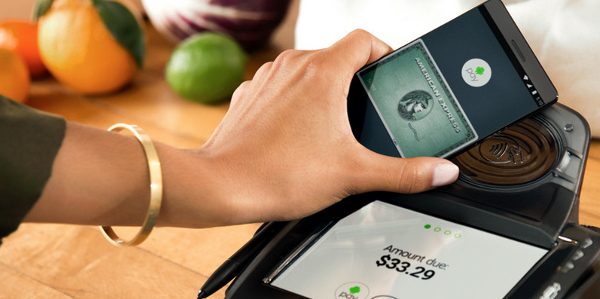Moneris Solutions is predicting that by 2030, cash purchases will make up only 10% of money spent in Canada, down from 35% in 2014. The credit and debit card processor said mobile payment technology is accelerating the shift away from cash.
An online survey of more 1,500 Canadians found 67% of those 18-34 and 56% of those 35-44 prefer to use a contactless-enabled (tap) card to make purchases – the same tap-to-pay method used in mobile wallets. Nearly half (48%) of those 55-64 and 49% of those 65 prefer tap cards.
Rob Cameron, chief product officer at Moneris, said the number of contactless transactions had more then doubled this year, “which is a strong indication that mobile payments are going to see a huge lift.”
With low-value transactions in particular, “retailers encourage people to use contactless [payment] and consumers have figured out that it’s so much easier than dealing with change,” he said. “We’re starting to see them get used to tapping and the next logical step is, if your cards are on your phone, it’s easier to get your head around tapping your phone as well.”
Not surprisingly, the survey found younger Canadians are more open to mobile wallets. One quarter of Canadians 18-34 preferred paying with a mobile wallet over cash or cards. Comparatively, 18% of those 45 to 54 prefer using a mobile wallet; 10% of those 55 to 64 prefer using a mobile payment; and only 6% of those 65 and older prefer using their smartphones over cash or cards.
Moneris said the June 2016 expansion of Apple Pay to include support from all major Canadian banks would also help spur the adoption of mobile wallets. Of Canadians 18-34, 46% said they would be more likely to use a mobile wallet if it were available for the kind of credit card they used, and 47% said they would use a mobile wallet if it were available for the kind of phone they used.
When asked their reasons for not using a mobile wallet, 62% of Canadians said they would be more likely to use it if they knew it was secure. In addition, 50% said they would leave their wallets at home if they could store all their loyalty cards on their phone.
“Canadians love loyalty points and so if there’s a loyalty program along with the payment on our phones, they’ll be more likely to use it,” said Cameron, citing Starbucks as a retailer that offers this.
Other reasons consumers cited for not wanting to leave their wallets at home:
-if I could get all my receipts emailed to me (48%)
-if I could make purchases at any store using my phone (46%)
-if I could store my ID in my phone (40.5%)
-if I could pay for public transit using my phone (35%)
Cameron’s advice to retailers is “just be ready for how people want to pay, whether it’s a tapped card, an inserted card or cash…. People are used to convenience and if you get used to tapping your card everywhere, you should be accepting a tapped card at your retail location.”










